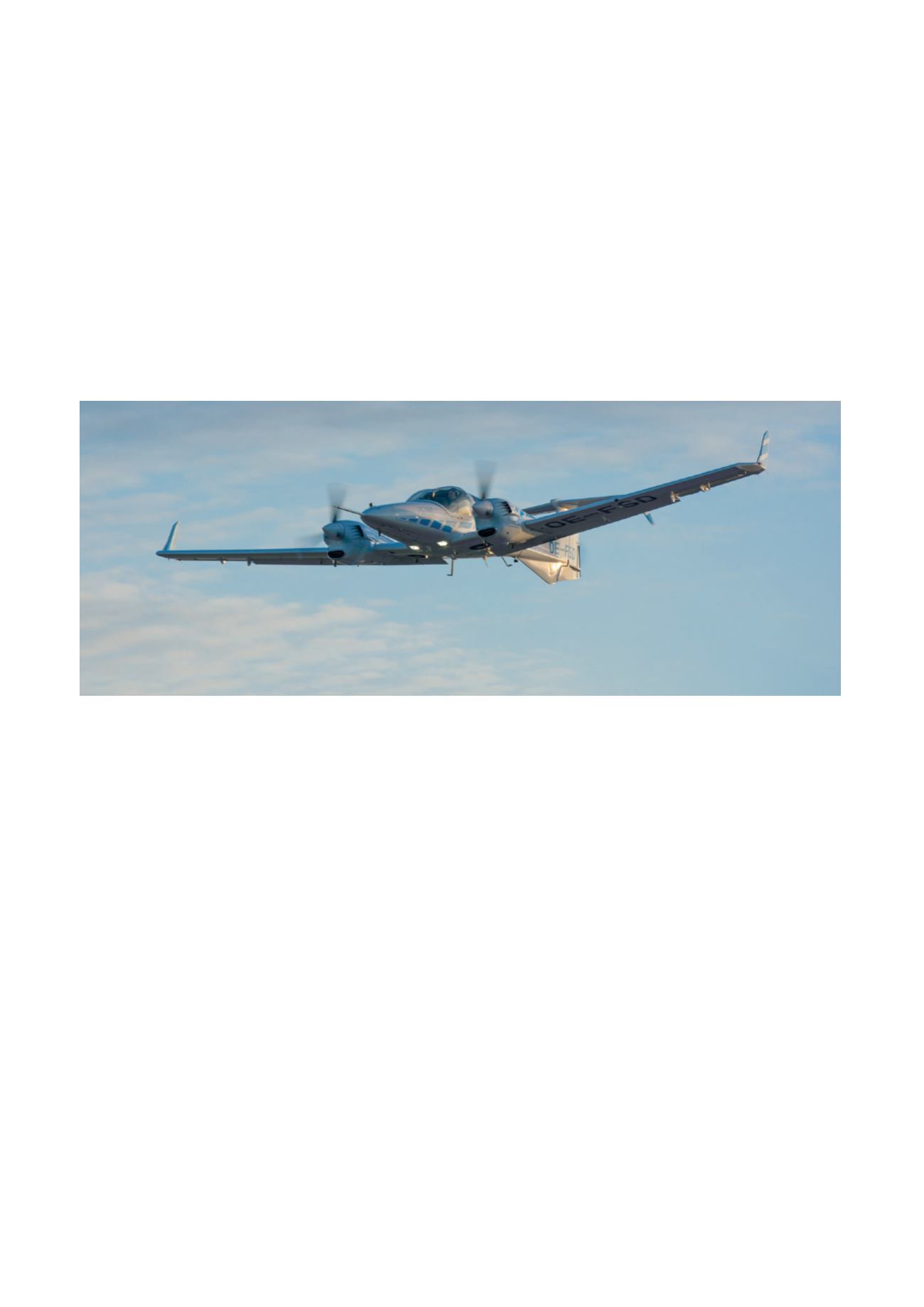

154
Flight System Dynamics
Making innovations fly in certified products of small and medium-sized aerospace companies
n
As part of the Technical University of Munich Department of Mechanical Engineering,
we are devoted to analyzing and modifying the dynamic characteristics of aerial platforms.
Our passionate team is committed to mature cutting-edge technologies that are required
to incept the flight system behavior of tomorrow.
During the last years we have acquired all the experience
which is needed along the whole process of making
control ideas fly. This includes modeling and system
identification, controller design and implementation in real
aircraft. Our research areas are presented in the following
sections. The research infrastructure includes several flight
simulators, test rigs, and manned and unmanned aircraft.
We have established important partnerships and syner-
gies with top research institutions and leading industrial
players in the field of aerospace. Our ultimate goal is the
development and the application of innovative approaches
tailored to real world applications and products, as well as
to the demanding challenges of tomorrow.
Flight Guidance and Flight Control
In 2017 the Institute of Flight System Dynamics was able
to draw upon and continuously expand its successes
from previous years in the domain of flight guidance
and control. For several years the institute now operates
a Diamond DA42M-NG general aviation aircraft for
research purposes. With the personal commitment of
several research assistants of the institute the aircraft was
modified according to the special demands for flying and
testing modern flight control algorithms. In particular a full
fly-by-wire system was design and installed.
In November 2016, full automatic flight had already
been demonstrated, ranging from automatic take-off via
waypoint en-route flight to automatic landing. Based on
this success, additional flight hours were gathered and
experience was gained in 2017. In particular, performance
of the flight control system was improved and the robust-
ness to external disturbances was evaluated. Furthermore,
an active stick was installed into the DA42 for manned
flight experiments, including angle of attack limitation and
stall protection.
Besides the Diamond DA42 the Institute of Flight System
Dynamics is also involved in the development of flight
control systems for additional different types of aircraft.
One example, where the efforts really paid off, was the
maiden flight of the unmanned SAGITTA Demonstrator
at the Overberg test range in South Africa in July 2017.
Within the ‘Open Innovation’ initiative led by aircraft-
manufacturer Airbus, the unmanned aerial vehicle
(UAV) has been newly developed in a collaboration of
partners from academia and research. Designed as an
innovation- and technology-demonstration platform, the
diamond-shaped flying wing has a wingspan of 3 m and a
take-off weight of about 150 kg.
The institute and the focus group ‘Aircraft Stability and
Control’ at the Institute for Advanced Study (IAS) have
developed an innovative flight control system for the SAG-
ITTA Demonstrator that enables fully-automatic operation
of the aircraft. The major challenge of the development
was to ensure a safe flight of the UAV, as there is no pilot
on board who could react to unexpected behavior.
Research aircraft OE-FSD on approach to automatic landing



















